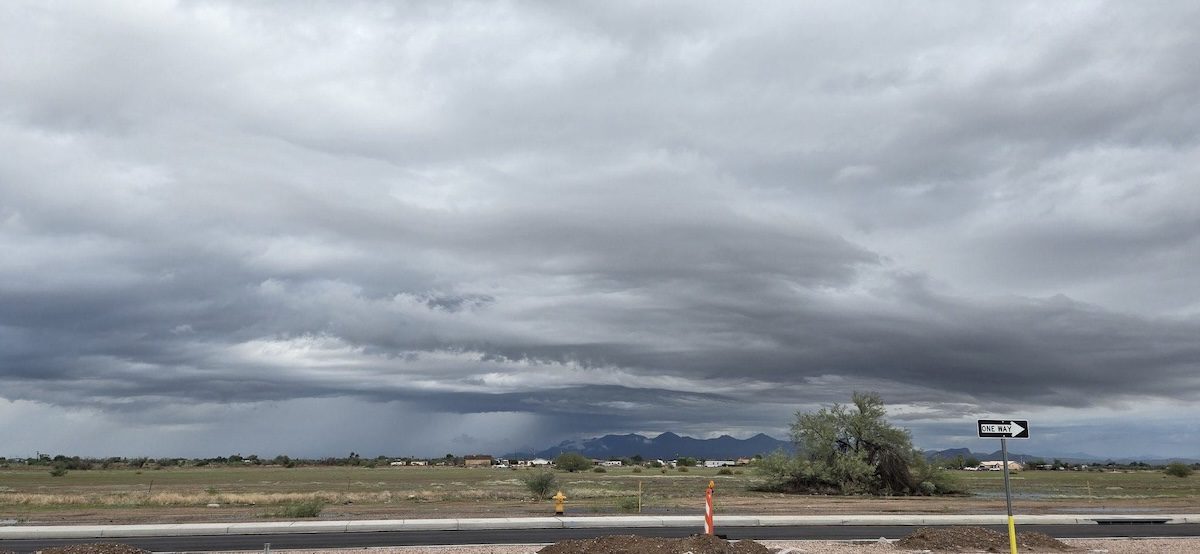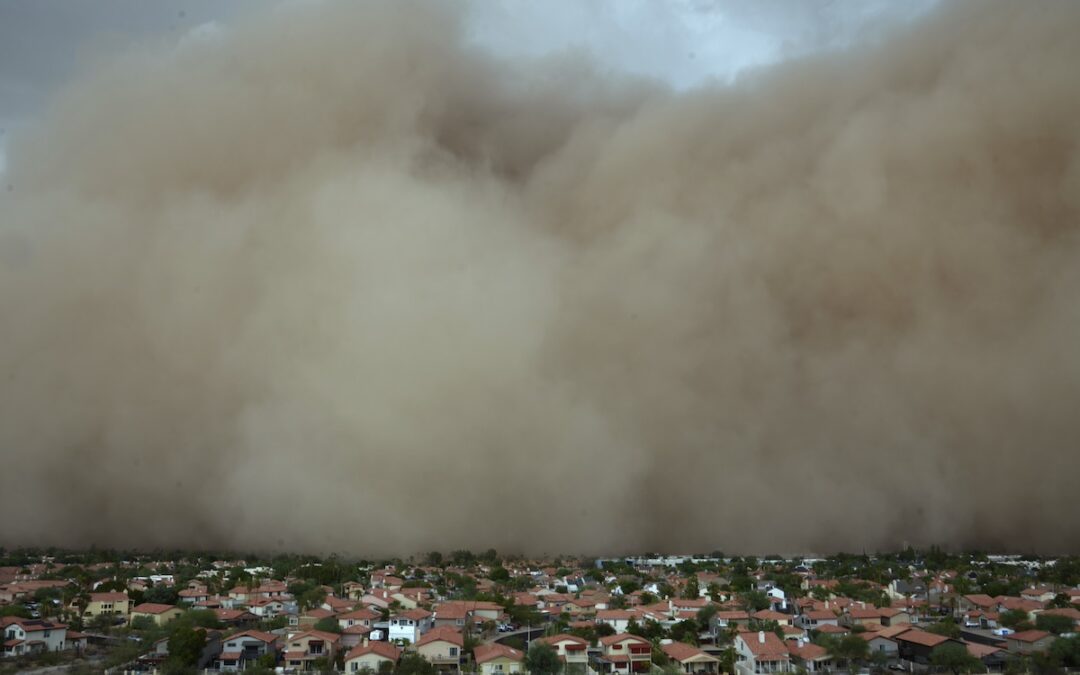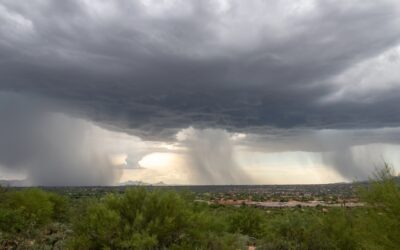
Thunderstorm clouds from Scottsdale on Oct. 13, 2025, along McKellips Road just east of Loop 101. Wendy Killeen/The Republic via Reuters Connect
Arizonans looking forward to cooler winter weather may be disappointed this season, as the National Weather Service said it predicts drier and warmer-than-normal conditions in the Southwest.
Every season, the Climate Prediction Center, part of the National Weather Service, issues nationwide outlooks based on several climatological observations, overarching trends and computerized models.
This winter’s La Niña event, a climate pattern triggered by cooler Pacific waters, heavily influenced the winter outlook affecting Arizona.
“A northerly shift in the storm track during the winter months often accompanies La Niña events, so the southern tier of the country is forecast to be warmer and drier than normal,” said Jon Gottschalck, chief of the operational prediction branch of the Climate Prediction Center.
What is La Niña, and how does it impact weather outlooks?
The key player behind this winter’s forecast is La Niña, a recurring climate pattern that shapes weather around the world and often spells dry, mild conditions for Arizona.
La Niña conditions are expected to persist through December and on to February 2026. Forecasters said there is a 55% chance conditions will return to a neutral phase between January and March.
The El Niño Southern Oscillation, also known as ENSO, is one of the most accurate metrics to create a long-term forecast. ENSO is a natural cycle that represents the relationship between ocean temperatures and atmospheric conditions in the Pacific Ocean.
There are three ENSO events: El Niño, La Niña and a neutral phase.
MORE: Leaf-peeping in Arizona: The state’s most scenic spots
During La Niña, trade winds that blow east to west along the equator intensify, triggering colder-than-normal surface temperatures in the eastern Pacific and a chain reaction of weather events.
El Niño is the opposite and occurs when trade winds weaken or reverse completely, increasing oceanic temperatures.
ENSO is one of the strongest climate signals and a major driver for seasonal outlooks.
But scientists also base long-term weather predictions on boundary conditions, like low soil moisture and drought, long-term climate trends over a 30-year window and data-driven models.
Forecasters expect this La Niña to be weak, but Arizona could still see an extended stretch of mild, dry days with fewer winter storms in the High Country.
“Statistical relationships between past La Niña events and precipitation amounts across the Southwest show drier conditions with the occurrence of a La Niña, but the correlations aren’t perfect,” said Michael Crimmins, a climatologist at the University of Arizona. “The timing and weakness of this event increases the uncertainty.”
What will winter be like in Arizona?
In Arizona, La Niña typically brings fewer winter storms, reduced mountain snowpack and warmer daytime highs, especially in the southern and central parts of the state.
Northern Arizona could still see cold spells and the occasional snowstorm, but the frequency and intensity of storms are often limited when the jet stream shifts northward.
Last winter offered a preview: Phoenix saw just a handful of rainy days between December and February, and Flagstaff’s snowfall came in below average.
What will winter be like across the US?
While the Southwest is likely to experience a warmer and drier winter, other parts of the U.S. may see different weather trends.
The Weather Service predicts a milder-than-average winter across the southern portion of the country and along the Eastern Seaboard.
But wetter-than-average weather is expected in the Ohio Valley, the southern Great Lakes region and most of Alaska.
The Gulf Coast joins the desert Southwest with a drier-than-average tilt, and drought conditions are predicted to continue and worsen from southern Texas to California.
Although seasonal outlooks are imperative for scientists, agriculture and other industries across the nation, the science isn’t infallible. The outlooks are probabilistic, not certain.
Forecasters assign a probability on the map of whether an area is going to have above-average, below-average or normal precipitation and temperatures.
Reporting by Hayleigh Evans, Arizona Republic

What to know about massive dust storms called haboobs in the US Southwest
Massive walls of dust and debris called haboobs that roll through the US Southwest can be awe-inspiring and terrifying, especially for motorists...

‘Fire clouds’ over Arizona and Utah wildfires are creating their own erratic climate
SALT LAKE CITY (AP) — Two wildfires burning in the western United States — including one that has become a “megafire” on the North Rim of the Grand...

Monsoon season brings the promise of rain for the arid southwestern US
ESPAÑOLA, N.M. (AP) — Clouds build up in the early afternoon and gusty winds push in every direction. The skies darken and then comes the rain —...

Safety tips for Arizona’s monsoon season
Arizona’s monsoon season brings flash floods, dust storms, and extreme heat to state parks. Here are essential safety tips for June to September....




